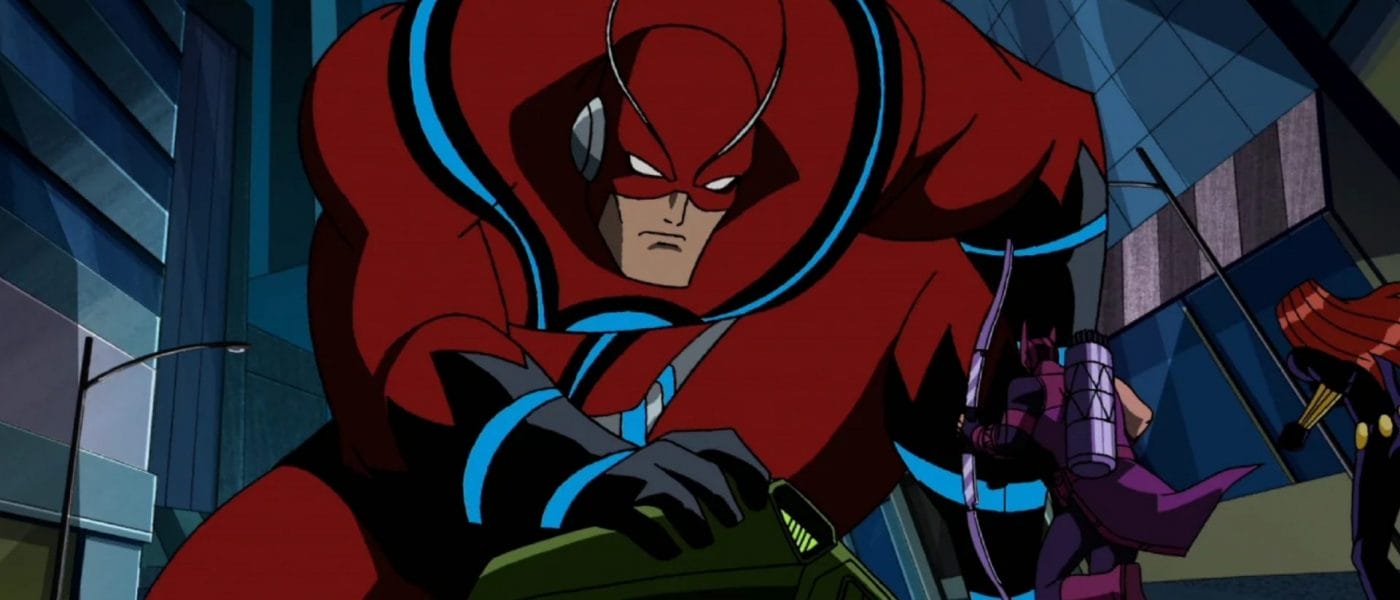The Physics of Ant-Man’s Strength
Ant-Man’s strength, both at his ant size and giant size, involves bending the rules of physics for storytelling, but we can analyze it through the lens of real-world physics:
Ant-Man’s Strength When Ant-Sized
- Pym Particle Explanation (Fictional):
- Ant-Man’s shrinking is explained as his mass and atoms being compressed without reducing his density. Essentially, he retains the mass and strength of a full-sized human in a much smaller package.
- Real-World Physics Analysis:
- Strength-to-Size Ratio: In real-world physics, smaller creatures tend to be stronger relative to their size because muscle strength scales with cross-sectional area (proportional to length²), while body weight scales with volume (proportional to length³). Ant-Man’s strength advantage would be realistic if he scaled his mass down too, but in the film, he retains full human strength, which is not scientifically accurate.
- Impact of Retained Mass: If he retains his mass, punching or jumping would impart massive forces due to the small contact area. For instance:
- His punch could exert enough pressure to break steel or other materials.
- Jumping might leave dents or craters due to his full human weight concentrated in a tiny footprint.
- Inertia Problem: If Ant-Man keeps his full mass, moving quickly at that scale would require enormous forces, which the movies gloss over. He would also have trouble stopping suddenly without generating massive impacts.
Ant-Man’s Strength When Giant-Sized
- Pym Particle Explanation (Fictional):
- When Ant-Man grows, his atoms spread apart while his overall mass increases dramatically. He retains his proportional human strength.
- Real-World Physics Analysis:
- Square-Cube Law: Strength scales with cross-sectional area (length²), while weight scales with volume (length³). This means as Ant-Man grows larger, his strength does not increase proportionally to his weight, making movement or lifting heavy objects increasingly difficult. In reality, his muscles would not be strong enough to support his own weight.
- Structural Integrity: His bones and muscles might collapse under his own weight. Large animals like elephants need specially adapted skeletal structures to support their mass, which Ant-Man does not appear to have when giant-sized.
- Energy Requirements: The energy demands for his body would skyrocket at giant size. For example, he would need immense caloric intake just to maintain basic bodily functions.
- Fictional Oversight:
- Ant-Man’s strength when giant is portrayed as far greater than what would be physically possible. He’s seen lifting ships or fighting with extraordinary force, which assumes his strength scales linearly or better with his size—contradicting the square-cube law.
Other Considerations
- Momentum and Impact Forces:
- When small, his punches would carry the momentum of a full-sized human concentrated on a tiny surface area, making them incredibly destructive.
- When large, his punches or footsteps would carry massive momentum and energy due to his increased mass, causing catastrophic damage to his surroundings.
- Air Resistance:
- When ant-sized, moving quickly through the air should be more challenging because air resistance becomes significant at smaller scales. Conversely, when giant-sized, air resistance would have a negligible effect.
Conclusion
Ant-Man’s strength and abilities defy the laws of physics, but they are internally consistent with the fictional logic of Pym Particles. His small-scale power is a result of concentrating his human strength into a smaller area, while his large-scale power assumes a linear scaling of strength with size, ignoring the limitations imposed by the square-cube law.
